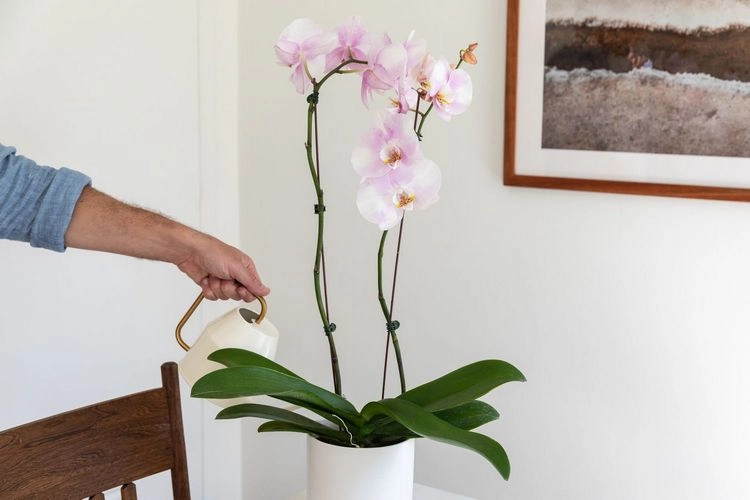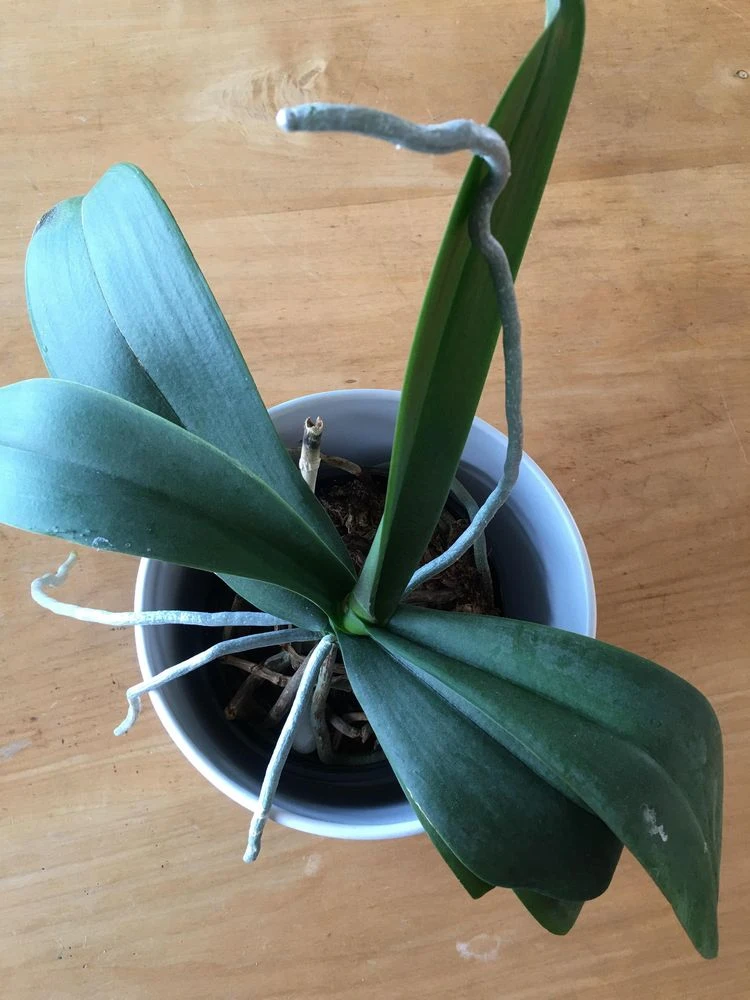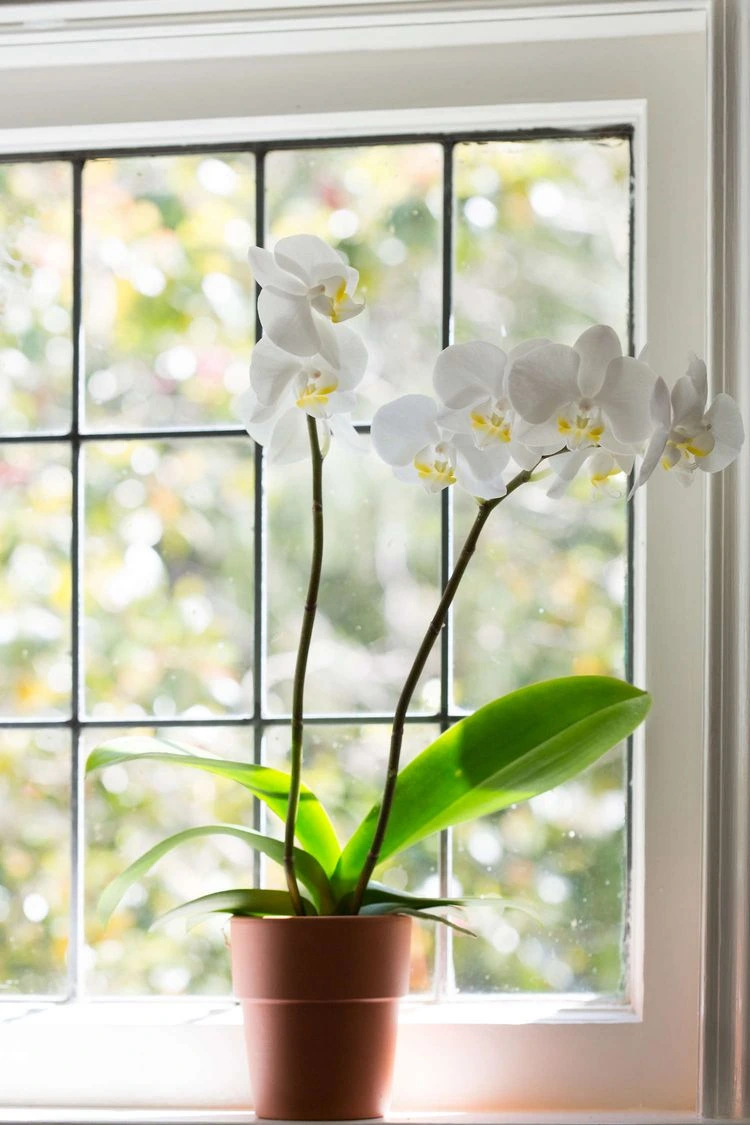Your orchid needs a dormant period to recover from the rigors of flowering and to replenish the nutrients that the plant is being deprived of during this time. During the dormant phase, the orchid’s leaves continue to store water and nutrients in preparation for when they are needed again. Because every orchid is unique, there’s a good chance your plant will eventually flower on its own. Discover how you can get your orchids to bloom again in the following article!
Shorten the flower stalk
When all the remaining petals of your orchid have fallen off, it’s time to trim the stem. Be careful not to cut it too short. Trim the stem of your orchid so that it is just above a visible joint. This stimulates development and enables the formation of new flowers.
On the other hand, if the stem color of your orchid has turned a papery brown, you should cut the orchid back to the base. Then it takes longer for the next flower to appear, but the plant can form a new bud that is stronger than the previous one.
The cut stimulates the plant and over the next few weeks it will form another flower stalk. Fresh buds will emerge from this stem, which will eventually lead to the formation of buds.
Fading orchids will bloom again with more light

Sunlight is one of the most important components in keeping orchids healthy, thereby increasing the likelihood that they will continue to flower. If you want your orchid to bloom despite the distance from a window, increasing the amount of light it receives can help. Ideally, the site should face east or west. They need a lot of light, but it should be shielded.
How to get orchids to bloom again – proper watering

In addition to light, your orchid also needs regular watering to produce new flowers. The amount of water a plant needs can usually be accurately estimated based on the medium in which it is growing. The free-draining orchid bark commonly used on store-bought orchids requires extra watering to keep the roots from drying out. Peat is better than bark in its ability to retain moisture, so soil mixes containing peat require less frequent watering.
Orchids that have been watered excessively or improperly will have a hard time blooming again. Never leave an orchid in water for a long time and avoid getting the leaves wet. It is advisable to test the soil with your finger before watering on a schedule. Wait a few more days if the soil hasn’t reached its normal moisture level. If you want to water at the optimal time, you should do it a day before the soil dries up completely.
You can also use a sharpened pencil as a tool. Stick the pointed end into the ground. If the graphite changes color, this is a sign that there is sufficient water in the soil. Be careful not to damage the roots.
Bring orchids to bloom again – don’t forget to fertilize regularly

Over time, any plant grown in a container will either deplete or deplete the nutrients in the soil of any plant. Orchids in particular need additional support at exactly the right time for optimum growth and flowering. For best results, feed your orchids with a liquid fertilizer specially formulated to encourage flowering. Orchids should be fertilized every two weeks during the spring and summer months with a high nitrogen fertilizer to ensure healthy development. Switch to a high-potassium fertilizer and give once a month in the fall to encourage flowering.
If you feed your plants frequently, consider rinsing the pots with clean water once a month to prevent a build-up of salts that could be harmful to the plants’ roots. To avoid burning roots and leaves, never use more than the amount indicated on the container.
How orchids bloom again – repotting is important

It is advisable to repot orchids every 2 to 3 years if you want them to stay healthy and flower. Lack of or poor growth and wilted leaves are signs that a plant needs repotting. If new growth is expected in spring, consider repotting the plant at that time. Squeeze the jar to free the plant, then gently remove it from the jar. Shake the plant to rid it of old bark and debris, then use sharp, clean pruning shears or sterilized scissors to remove the dead roots of the plant.
Take your time when choosing a new pot. Orchids have a great fondness for having their roots tightly packed in a container that has good drainage. In many cases, you can simply add new soil to your plant while keeping the same container in which it grows. Place the plant in the vessel and secure while you fill the rest of the pot with fresh orchid potting material. Continue this process until the plant is well accommodated. After repotting, give the plant plenty of water to keep its roots well soaked.